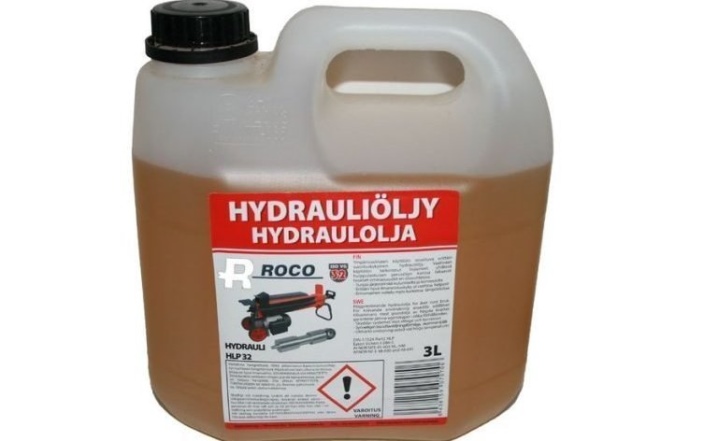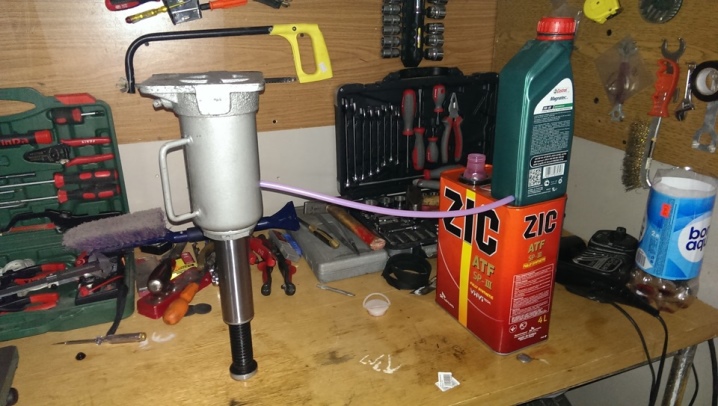Hydraulic jack malfunctions and their elimination

Hydraulic jacks are used when carrying out activities involving lifting all kinds of objects to a certain height. Units can vary in carrying capacity, type, purpose, but their structure and principle of operation are identical, therefore, the malfunctions of the lifting mechanisms are similar.


Possible problems
Of all the reasons why a jack (diamond-shaped, rolling or bottle jack) may not function, 3 key situations should be distinguished: stem malfunction, system clogging or valve failure. Let's analyze each moment in more detail.


System blockage
It can be triggered by the penetration of dirt, dust or air into the oil. If air enters, the jack bearing rod is able to stop rising, start to spring intensively, or completely sit down under the load.
The accumulated lumps of dirt are able to restrain the movement of the valves, which will cease to seal the channels hermetically, allowing oil to pass in both directions.
In this situation, the emphasis will not be held in one position, gradually descending to the starting point.

Malfunction of ball valves
In addition to blockage, mechanical defects may occur.... The ball valve at the tip of the spring, abutting against the tapered groove, is able to detach or catch on the rest of the system components. Then the rod will not come out at all, since the oil circulation is disturbed in the system, and pumping does not occur. This malfunction is more complicated and requires disassembly of the jack. If there are traces of wear on the ball valves, then they must be changed.

The curvature of the stem can be a consequence of non-compliance with storage or maintenance conditions and can be from working with heavy loads and as a result of non-compliance with the rules of use. In the first episode, the piston can become covered with rust, which will weaken the tightness of its abutment to the cylinder surface, as a result of which oil will leak. If you lift loads higher than the permitted standard, the rod can bend. The possibilities of such a malfunction increase with the extreme removal of the screw and the jack crookedly installed on the ground. Rod curvature is a very serious malfunction that rarely lends itself to correction, even in specialized services.

What to do?
Does not hold under load
The lowering of the stem when it rests on the load being lifted and sometimes without a lot of pressure happens for 2 reasons: lack of oil or failure of valves. Let's consider each of the options separately.
Lack of oil is associated with normal leakage with poor sealing, the jack bypasses oil. As a rule, this is the result of prolonged storage of the jack with the shut-off valve turned off or the development of gaskets. The issue is solved by adding oil and pumping the device. It is advisable to practice specialized oils for hydraulic systems, at the worst, ordinary technical oils will do. If, after filling, the oil leaks out even with the tap tightly closed, you need to buy a repair kit and change all the seals.


Inoperability of valves is caused by contamination of the system or a mechanical defect. It is not necessary to disassemble the lifting device right away.
It would be wiser to first flush the channels and internal surfaces that are dirty.To this end, all the oil is drained from the device and flushing fluid is poured (gasoline or kerosene is suitable). It is pumped several times, the spent liquid is drained, a clean one is poured in, and so on 2 more times.


If flushing does not work, you will need to disassemble the jack and inspect the valves. They can be loose due to weakening springs, or have deformed or worn out balls. The first reason is most likely and is corrected by rotating the spring or adding a small washer under it to increase pressure by reducing the distance to the valve. A worn out or deformed ball needs to be replaced.

Poorly lifts
One of the most common problems is a decrease in the piston travel speed to a minimum or a lot of idle. This malfunction is often associated with a reduction in lift height and a lower limit load. The main reason for such a problem lies in the airing of the system, which occurred as a result of a decrease in the oil level. It is quite easy to restore the hydraulic jack to work in such a situation. This will require 150-300 milligrams of oil and flushing fluid (if the device is older than 2 years).

First, the shut-off valve is loosened one turn from the tightened position. Then the pump rod is lowered, stop to the very end.
The plug on the filling hole is unscrewed or removed (if made of rubber), the used oil is drained. When the device is many years old, it is possible that its channels and the surface inside are clogged with dirt, which is an equally significant reason why the jack does not lift well. It is required to rinse it, it would not hurt several times.
For this purpose, gasoline or kerosene can be used. The liquid is poured through the drain hole, the tap is closed, the piston rises by pumping the pump, the tap opens, the piston is lowered, the process is repeated a couple of times. After the heavy liquid is drained, a new portion is poured in and the above procedures are repeated at least one more time (it is necessary to focus on the purity of the drained liquid). After cleaning the system, you can refill it with oil.

Before filling with oil, the piston with a stop must be lowered to the lower position and the valve must be tightened. The bottle-type device must be placed vertically during pouring (it is poured into the trolleys in a horizontal position). It is more convenient to refuel the jack with a syringe, until oil fills the entire container and flows out of the hole.

Does not go down
Rarely encountered, but still essential for many, the situation is associated with the sticking of the stem in the raised position. When the stem of the device has come out and does not sit in place, 2 reasons must be considered: clogging of the shut-off valve or curvature of the stem. The latter, as a rule, is caused by a mechanical defect - from lifting loads exceeding the permitted weight. In such a situation only replacement of the element is possible.
In addition to distortion, rust can form on the stem and surfaces inside the cylinder from prolonged storage in unsuitable conditions (dampness, with the valve turned off, with the stem raised). Parts can be restored by complete disassembly and cleaning from corrosion.


When the jack does not lower, however, the rod spins unhindered in a circle, so there is a snag in the stopcock.
It looks like a small foreign object has hit the hydraulic jack with the oil being poured. When pumping, it found itself in the cylinder, and when the stem was immersed, under the influence of force, it clogged the valve channel. The easiest, but not very correct choice is to turn out the tap completely, expanding the channel to the maximum. If you're lucky, some of the oil will drain and the stem will drop. If not, the jack must be disassembled to reach the base of the cylinder and remove the blockage.

Recommendations
To increase the lifespan of the jack, it is advisable to observe the following rules.
- It is necessary to change the oil of the lifting device 2 times a year. If the hydraulic jack is used every day, then replacement must be carried out at least once a month and must be flushed.
- It is allowed to use any oil for replacement... But for the winter season, it is advisable to fill in exclusively synthetic varieties of oils.
- So that the lubricant does not thicken in winter, the jack must be kept in a dry and warm room.
- When lifting work is carried out in the winter, it must be remembered that that with prolonged use of the device in severe frost, it can become unusable. In this regard, it is recommended to work with him in the most extreme case and for a short time.


The ideal "repair" of the lifting device - This is preventive work to prevent the occurrence of breakdowns, in other words, continuous maintenance and timely replacement of the working fluid with pumping. Since the elimination of any malfunction will require spending personal time, and sometimes certain funds. Therefore, all instructions for the use of hydraulic lifting devices must be adhered to, in which case they will work for quite a long time.
For repairing a hydraulic jack, see below.













The comment was sent successfully.